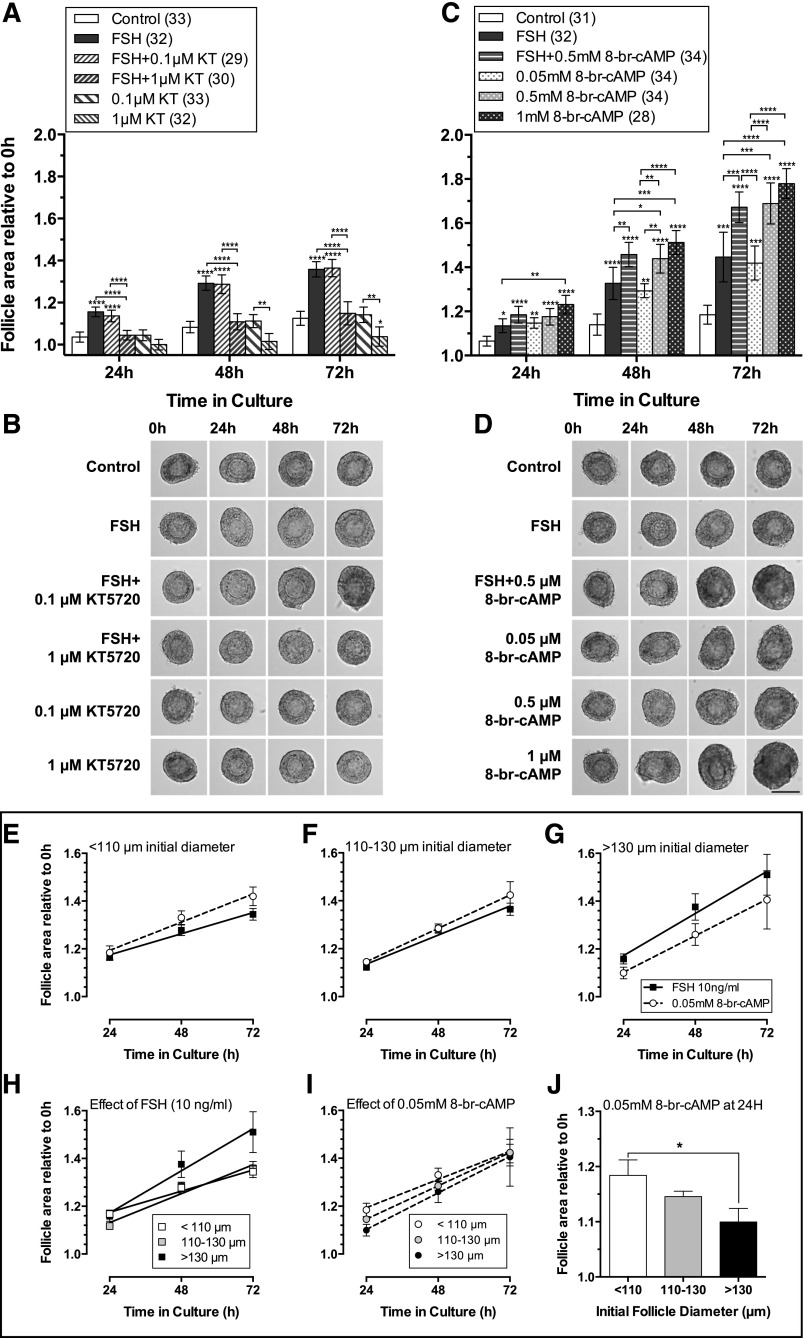Figure 9.
Inhibition of the PKA pathway with KT5720 (KT, panel A) reduced follicle growth, whereas treatment with the cAMP analog, 8-br-cAMP (C) stimulated follicle growth. (A) Response of preantral follicles to vehicle control medium, FSH (10 ng/mL), FSH + 0.1 µm KT5720, FSH + 1µM KT5720, and 0.1 and 1 µm KT5720 alone. FSH-stimulated growth was reversed with 1 µm KT5720. There was no significant difference in the distribution of initial follicle size between treatments (Kruskal-Wallis). The relative area of follicles in different treatments (area at timex/area at time0, where timex = 24, 48, or 72 hours) was compared at each time point using 1-way ANOVA with a Tukey’s multiple comparisons test. *P < 0.05; **P < 0.01; ***P < 0.001; ****P < 0.0001. Values are means and 95% confidence interval. Numbers in parentheses are numbers of follicles. (B) Growth of similarly sized follicles (between 110 and 120 µm) diameter, in the treatments described in (A), scale as in (D). Follicles in all treatments remained healthy throughout the 72-hour culture period, as shown by morphology and absence of atresia (darkening of GCs). (C) Response of preantral follicles to control medium (vehicle alone), FSH (10 ng/mL), FSH + 0.5 mM 8-bromo-cAMP, and 0.05, 0.5 and 1 mM 8-bromo-cAMP alone. Statistical analysis, values, error bars, numbers in parentheses and P values as in (A). (D) Growth of similarly sized follicles (between 110 and 120 µm) diameter, in the treatments described in (C). Scale bar = 100 µm. Follicles remained healthy in all treatments. (E–J) Response of follicles of different sizes to 0.05 mM 8-bromo-cAMP and 10 ng/mL FSH. 8-bromo-cAMP (0.05 mM) stimulated follicle growth to a similar extent to 10 ng/mL FSH, and therefore was used as a positive control for PKA pathway activity.

